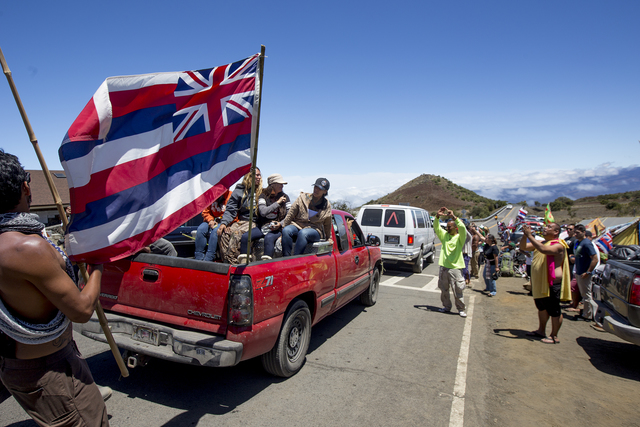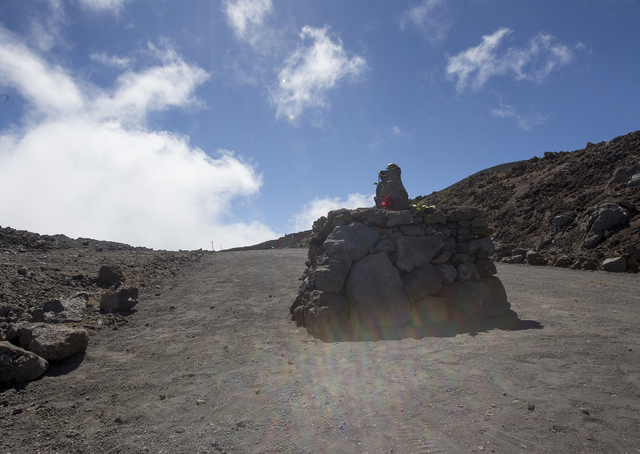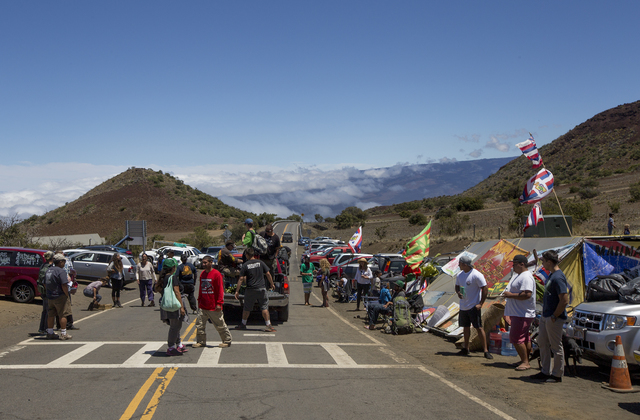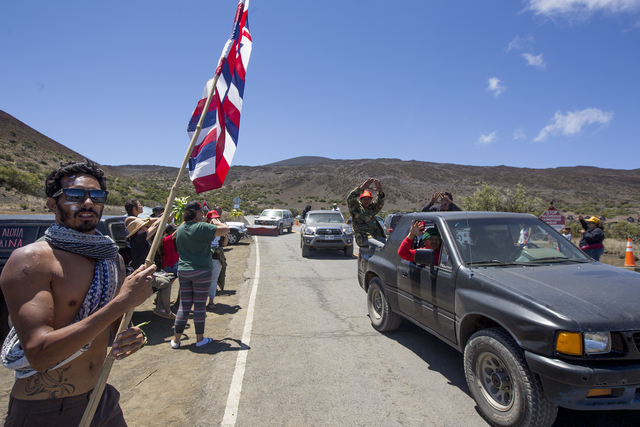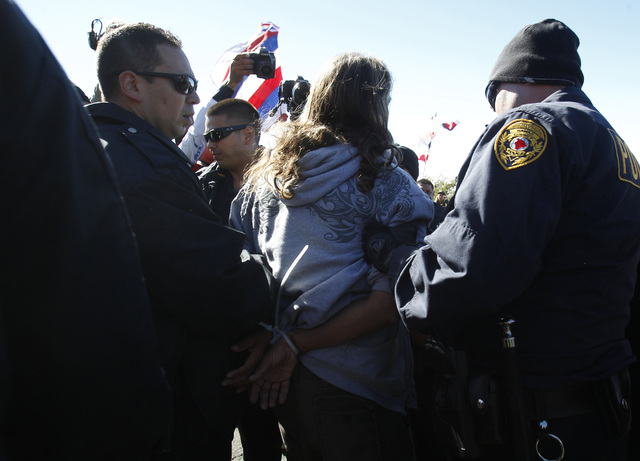The boulders and rock walls were cleared Thursday, but the road to the top of Hawaii’s tallest mountain remained inaccessible to the public following a dramatic protest against the Thirty Meter Telescope the day before.
Under the supervision of Mauna Kea rangers, several dozen TMT opponents removed the obstructions placed over 2 miles of Mauna Kea Access Road on Wednesday to force police and construction workers to head back down the mountain.
That was good enough to allow telescope operators to reach their observatories atop Mauna Kea, but the TMT opponents refused to touch two ahus they built in the roadway, and state officials had yet to reach a decision on how to remove them.
The road, a University of Hawaii spokesman said, would remain closed to the public until further notice.
“We’re working towards that and we hope to have a resolution as soon as possible,” said Dan Meisenzahl, UH director of media production.
“A lot of this unfortunately is out of Mauna Kea management’s and UH’s hands.”
The university manages the road and Mauna Kea Science Reserve.
Meisenzahl said there were “a lot of things at play” and that Gov. David Ige and state attorneys are involved.
Ige said in a statement that the state continues to assess the situation to ensure public safety.
“The road has been temporarily closed until further notice,” he said.
“The Mauna Kea Comprehensive Management Plan authorizes the University of Hawaii to close the road in the event of hazardous conditions and emergencies.”
Further frustrating tourists, the Mauna Kea Visitor Information Station across the road from the TMT opponents’ unauthorized camp was closed at 10:30 a.m.
No explanation was given.
“Politics shouldn’t get in the way of the public being able to enjoy the different things this island has to offer,” said Holly Manley of California.
Kahookahi Kanuha, a protest organizer who helped remove the rocks, said the protesters weren’t trying to keep the road closed. But he said only the person who built an ahu can remove it.
“I can’t touch that,” Kanuha said. “I didn’t build it.”
He reiterated that use of the rocks wasn’t planned and that protest organizers weren’t intending to block access to any other vehicles.
“We’re not here to fight or prevent anything at this point other than TMT,” Kanuha said.
It remains unclear when TMT will make another attempt to reach the summit to begin work, or whether additional police officers will be called in to assist.
In a written statement, Henry Yang, chair of the TMT International Observatory Board, called Wednesday a “difficult day for Hawaii and TMT.”
After being forced off the mountain for safety reasons, Yang said TMT plans to resume work once the issue is resolved.
“We want to thank the state and county police officers for protecting the safety of our team and the protesters and extend our gratitude to them, as well as to all of our supporters in Hawaii,” he said.
“We want to acknowledge and reach out to those who disagree with our project. We respect their views and, looking toward the future, we hope we can work together to find common ground.”
After TMT crews headed down the mountain Wednesday, W.M. Keck Observatory staff attempted to use the access road, but were met by a group of protesters who blocked their progress and prevented them from performing necessary telescope maintenance, said Keck operations manager Rick Matsuda in a statement. The observatory’s second attempt was successful, but only after considerable negotiation, he said.
By then, protesters had moved most of the rocks to the side of the road.
Rangers with the Office of Mauna Kea Management ultimately closed the road, forcing observatories to also suspend nighttime operations, according to Matsuda.
“Going forward, feasibility of operations will be assessed on a day-by-day basis,” he said.
Much like the governor’s office and others, Matsuda said the observatories have serious concerns about rocks on the roadway.
“Just as all the current observatories respect the protesters’ right to peacefully demonstrate on the mountain, we hope that they will respect our need to conduct the work that contributes to Hawaii being the home of the most scientifically productive telescopes on Earth,” he said.
Kanuha said protesters, who numbered about 300 Wednesday, would be prepared for another attempt by TMT crews to access its site.
He said they still have a long road ahead of them but was encouraged by the outpouring of support.
“As far as I see it, ku kiai mauna 3, TMT 0,” Kanuha said.
Email Tom Callis at tcallis@hawaiitribune-herald.com.
Email Chris D’Angelo at cdangelo@hawaiitribune-herald.com.






